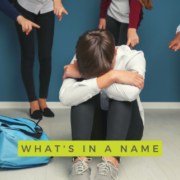Bicycle Safety for the Summer Months, Part I
School’s out for the summer, although it has felt like school has been out for much, much longer due to the Covid closings. Now the children have the complete freedom to enjoy the outdoors without the need for Zoom meetings, online check-ins, Google Classroom assignments, etc. Biking is a summertime favorite for many children and teens. And with more time on their hands, we are definitely seeing that more young bicyclists are enjoying time out in parks and racing through neighborhoods.
As fun and exhilarating as biking can be, it is the recreational activity that sends more children to the emergency room than any other sport or pastime. Because of these known dangers, it is important that kids are fully informed on bike safety and biking precautions before hitting the road. Below are important considerations for helmet use that will help children and teens remain safe during their biking adventures.
Helmets are a must
Medical research states that wearing a helmet reduces the risk of head injuries by 88%. Head injuries can happen anywhere, even if kids are going out for a quick trip up the sidewalk or around the driveway. Therefore, parents must consider this safety measure as non-negotiable—if kids are not wearing a helmet, they should not ride anywhere. Selecting a properly fitted helmet is just as important for biking safety. Follow the guidelines below to ensure that your child’s helmet fits properly:
- The helmet should fit snugly to the child’s head. There should be little to no movement if the child shakes or turns his head. If the helmet rocks or slips forward, backward, or off to the side, it’s ill-fitting.
- Choose the larger size if you find that your child is in between two sizes. However, before riding, place extra padding into the helmet so that the larger size fits snugly. Pads to match the model of the helmet are often available or may even come with the helmet. Follow the instructions for inserting the pads so that areas of the head are properly cushioned.
- A helmet that is not buckled is relatively useless; during a fall, the helmet can easily fly off, rendering it ineffective. Be sure to remind your child that the helmet must always be buckled securely before riding. Instructions on sizing and securing the straps will be included with the helmet, but a proper rule of thumb is that the strap should look like the letter “V” under your child’s ear when properly buckled.
- In the event of an accident, or if you see visible damage to any part of the helmet, it’s time to buy a new one. Even if the helmet looks fine after an accident, the foam or padding could be compromised by the impact. This means that it will not be fully effective in the event of another crash or spill.
- Remember, even if your child isn’t the one steering the bike, he must wear a helmet when riding. Whether he’s the toddler in a carrier on the back or standing on pegs while his friend pedals, a head injury is just as possible.
- This is not exactly a safety tip, but allowing your child to pick out her own helmet will help to ensure that she wears it. Some helmets come with stickers or other decor so that kids can personalize the helmet to their liking. Again, the helmet is only good to her when she’s wearing it.







